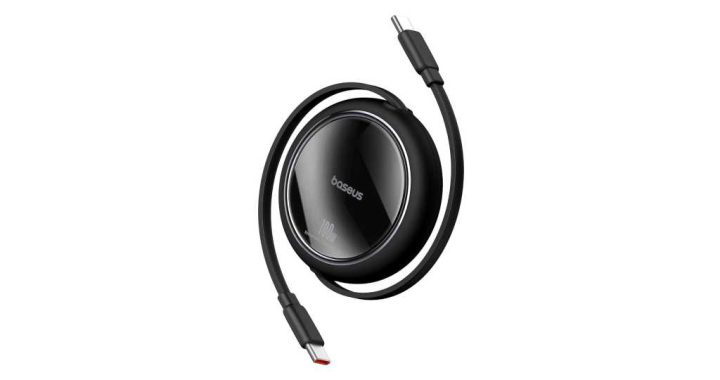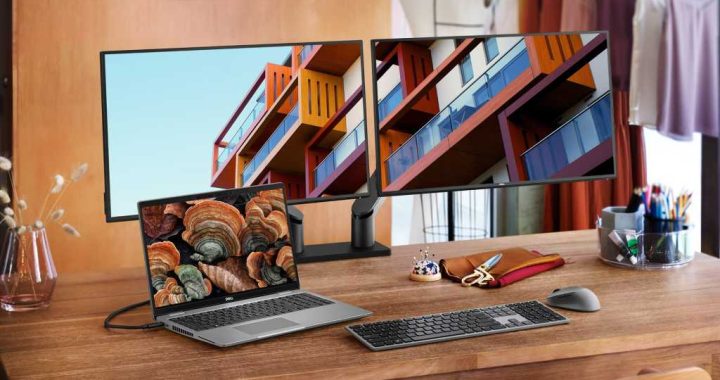The Microsoft Audio Dock, Presenter+ are your new Surface gadgets

The Surface Dock is dead. Long live the Microsoft Audio Dock.
Microsoft announced the Microsoft Audio Dock on Wednesday, a new USB-C dock that will connect to the Thunderbolt 4 ports that are built into its new Surface Pro 9, Surface Laptop 5, and Surface Studio 2+. It’s another indication that, as we predicted, the Surface Dock is dead, alongside the fact that Microsoft no longer sells it on its site.
Instead, Microsoft has gone in a different direction, arguing that you’ll want a speaker on your desk instead. No, this isn’t a smart speaker—Microsoft killed off the Cortana functionality from the Harman Kardon Invoke in 2021, and has moved instead to Teams-aligned speakers for business instead. Now, Microsoft appears to be adapting its Modern USB-C Speaker to your desk.
At 6.6 x 3.16 x 3.19 inches, and with a 54 x 48 x 41.5mm woofer/25.9 x 11.6mm tweeter inside of it, Microsoft appears to be trying to design a hybrid speaker dock for both work and play. The matte-black dock isn’t limited to Thunderbolt, however, which means that a larger variety of devices can connect to it. Microsoft isn’t splitting the difference by using DisplayLink, either.

Microsoft
Instead, the port selection includes:
- 1 HDMI 2.0 port with 4K@60Hz
- 1 10Gbps USB-C (USB3.1 Gen 2, power up to 7.5W) with support DP alt mode, up to Dual Display
- 1 10Gbps USB-C (USB3.1 Gen 2 data only, power up to 7.5W)
- 1 10Gbps USB-A 3.2 (USB3.1 Gen2)
- An upstream 10Gbps USB-C port to your PC, with charging up to 60W
The variety of data types and capabilities complicates matters, but the upshot is this: The Audio Dock supports a direct HDMI cable connection to an external 4K60 display. A second USB-C cable can also connect to a separate display, though it will essentially be splitting the upstream USB-C cable connection—possibly preventing it from supporting anything other than a 1080p display, or two 4K displays at lower resolutions. (Microsoft would say only that “dual 4K output is available when the host PC supports DSC [Display Stream Compression].” The other USB-C and USB-A ports can only be used for data, such as for peripherals.

Microsoft
It’s somewhat confusing, since the photos Microsoft has provided of the Audio Dock don’t seem to indicate which USB-C port can be used for a display, and which can’t. Power output of 7.5W from either USB-C port, however, should charge most smartphones, and the 60W power that the USB-C cable provides to your PC matches up nicely with the 60W its new Surface Laptop 5 consumes.
But this is more than just an audio dock. Microsoft designed this device specifically for Teams, and there’s an integrated “Teams button” to help you quickly join a Teams call and virtually raise your hand. The dock speakers, too, support 200Hz to 8KHz for videoconferencing and 70Hz to 20KHz for music playback, a wider dynamic range. There are two omnidirectional mics to help pick up your voice, as well. We can only assume that Windows will be smart enough to detect the Dock and its speakers and filter out background noises.

Microsoft
Microsoft also offers a new device to aid presentations in Teams: The Microsoft Presenter+ is a small 3-inch remote that can be used to control slides, among other functions. The small rechargeable (two hours to charge, with up to six days of battery life) Bluetooth 5.1 device includes a Teams button for joining a call and raising your virtual hand, as well as left and right buttons to advance the slides. A small indicator light also highlights whether you’re muted or not.
Presenter+ supports PowerPoint, Prezi, and Keynote, Microsoft said.

Microsoft
It should be noted that neither the Audio Dock or the Presenter+ is exclusive to Microsoft Surface devices, though Microsoft clearly designed them with its Surfaces devices in mind. Microsoft did not disclose the price of either upcoming product though preorders begin today. Both will ship on October 25.








